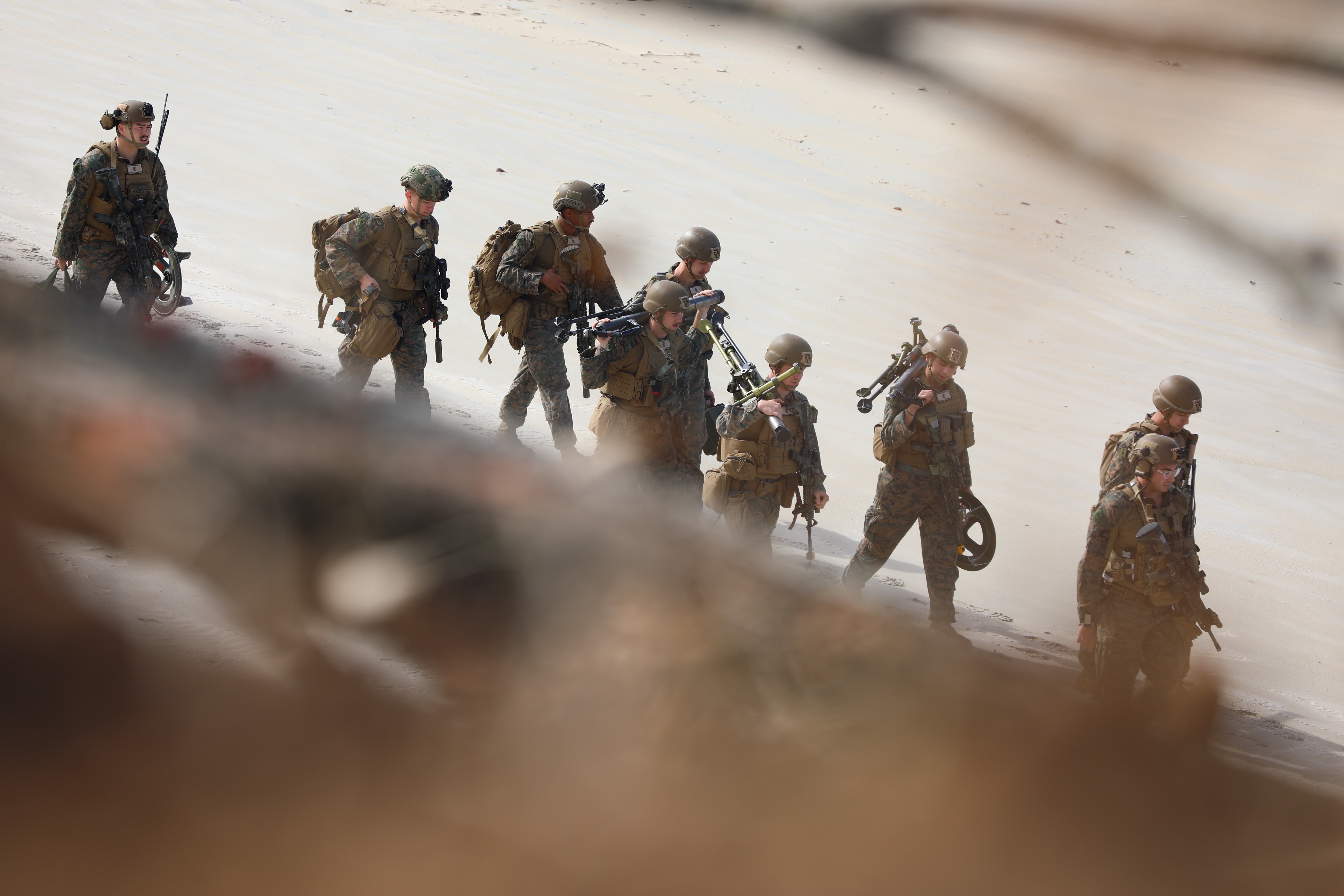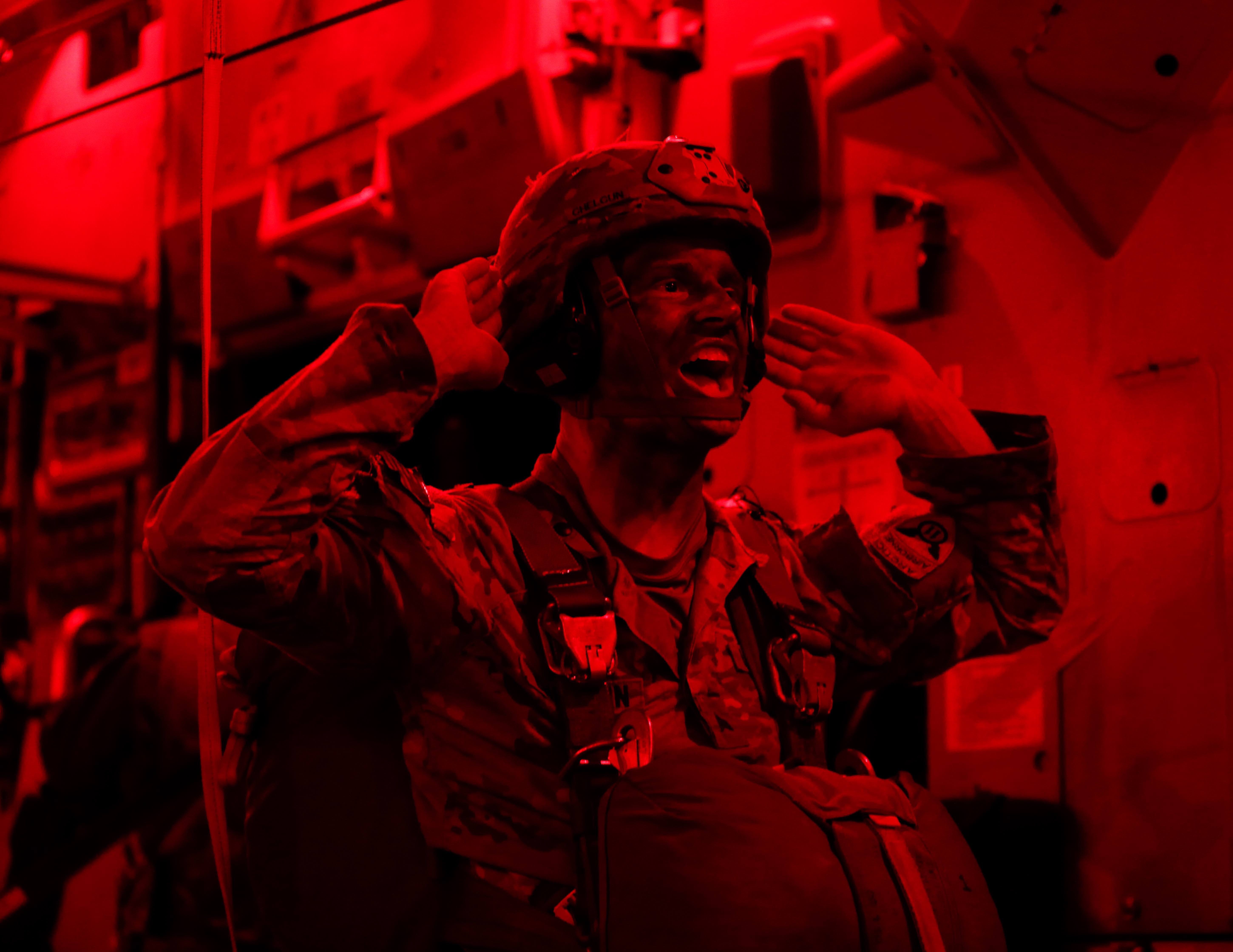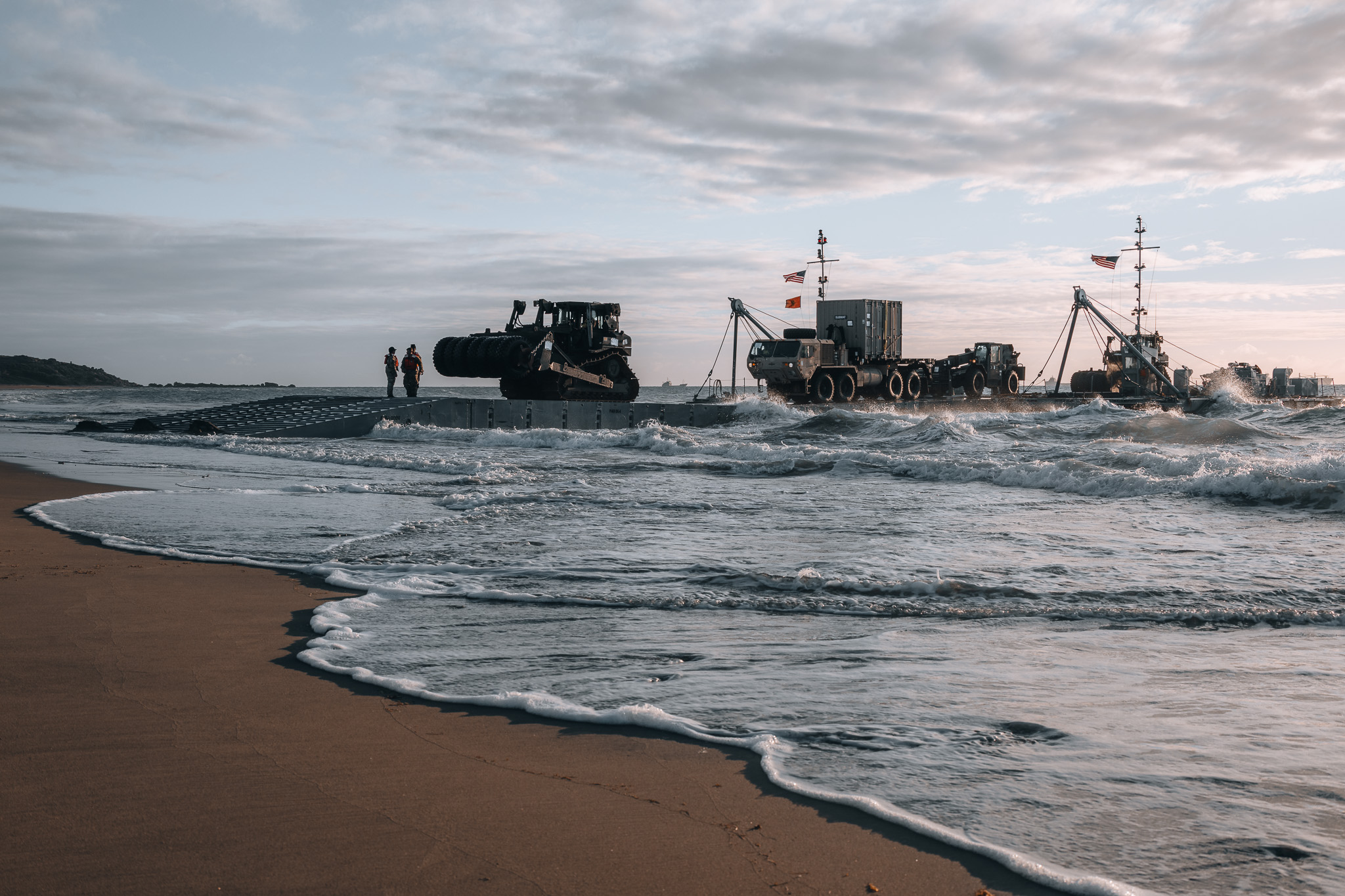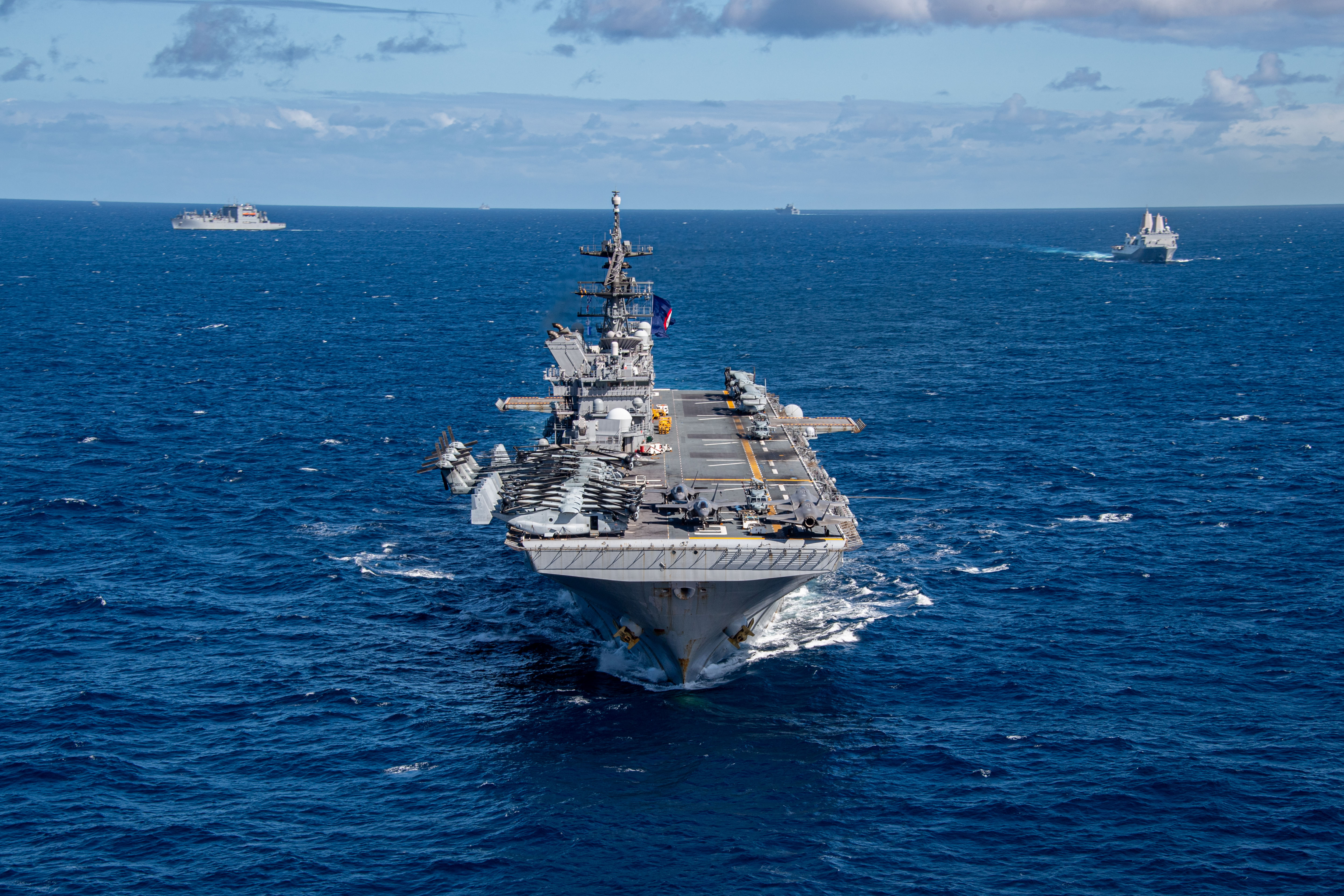
The largest iteration of Exercise Talisman Sabre, with more than 33,000 troops from 13 countries, concluded on Friday .
As part of the exercise, the U.S. Army established a Joint Logistics Over The Shore (JLOTS) facility in Australia for the first time. This floating pier permitted equipment to be unloaded onto a beach in Bowen, on the Queensland coast. Establishing expeditionary advanced bases was an important element of the exercise too, similar to how the U.S. is interested in prepositioning equipment in Australia and the Philippines.
“In the event of crisis or contingency, the thought of having to move so many troops, so much logistical support, from Camp Pendleton is a daunting task because of the tyranny of geography,” said Brig. Gen. Kevin Jarrard, assistant division commander, 1st Marine Division.
Distance is a challenge in “a contested logistics environment, which we really haven’t had to operate in for a very, very long time,” Jarrad said. “So, the 20 years that we spent in the desert, we essentially had air supremacy and it certainly was not a maritime theater. INDOPACOM is inherently a maritime theater, there’s no question about that.”
Talisman Sabre was also an opportunity for the U.S. to work with partners, officials told USNI News

“We talk a lot about interoperability of our forces. I view that really as kind of the basics; that’s being able to communicate with each other, and having similar systems, where you can, say, refuel each other’s ships…” Rear Adm. Chris Stone, commander of Task Force 76/3, told USNI News aboard USS America (LHA-6).
“Where we’re really trying to progress to is interchangeability, which is kind of the next step, that any one of us, regardless of the flag that we fly, can perform a mission for the other partner … So, we’re really trying to progress to where we can plug and play with each other, where we have similar tactics, techniques, procedures, doctrine, understanding, training, proficiency. In any way you slice it or dice it, you can just take one and plug it into the other, and do the same missions for each other.”
This interchangeability was evident as the US and Japan conducted a rehearsal of concept aboard America ahead of an amphibious assault on Aug. 2. Australia and South Korea also planned to conduct an amphibious assault, but this was canceled after HMAS Adelaide (L01) diverted to support recovery efforts after an Australian MRH90 helicopter crashed on July 28.
Currently, the Marine Corps is exploring how to disperse forces, since the People’s Liberation Army has the ability to threaten existing bases with missiles.
“The days of concentrating large formations, I think, are gone, and so [we’re moving to] a highly capable, dispersed force. If you think about the capabilities that exist down at the squad level or the marine platoon level, they previously existed at the regimental or division level! So, we’re pushing tremendous capability down to the smallest of our units, which allows us then to disperse on the battlefield,” Jarrad said.

Platforms like MV-22B Ospreys are critical to such concepts.
“The capability of that aircraft is revolutionary,” he said. “I mean, it allows you to move at speed, vast distances, to refuel in the air, and then to resupply those dispersed units. I think everybody understands how it’s a good idea to be dispersed, but how do you sustain those units in such a dispersed battlefield? … We’re thinking hard about the problems that a dispersed force across the tyranny of the geography of the Pacific presents to us, and how are we going to solve those challenges.”
The Navy is adapting to the PLA’s growing threat too.
“About a year and a half ago, we took a navy command, Expeditionary Strike Group Seven, which consists of amphibious ships…and the marine units of 3rd Marine Expeditionary Brigade, and we put them together with really a concept that, if we operated together day in and day out, that would be better as a combined team and more proficient than coming together for integration and exercises and operations, and then going our separate ways and coming back together,” Stone said.

Stone views it as getting back to the Navy-Marine Corps team, despite the concept still in the experimentation phase.
“So, frankly, this is getting back to where we used to be, after we’ve spent the last several decades focused on a different domain. It’s about being able to establish power projection from the maritime to the land,” he said.
The scale and multilateral nature of Talisman Sabre presented a powerful deterrence signal to China, Stone said.
“Our job and what we spend our time on every day is reassuring our allies and partners. And that’s a big part of deterrence, and we are capable, we are ready and we are training for that every day to defend this ship, this strike group, whatever it may be,” he said. “We hope it doesn’t come to that; we prefer to practice our partnership … But we’re prepared, if it comes to conflict, to defend ourselves and defend the force against a range of threats and, frankly, we practice it every single day.”




